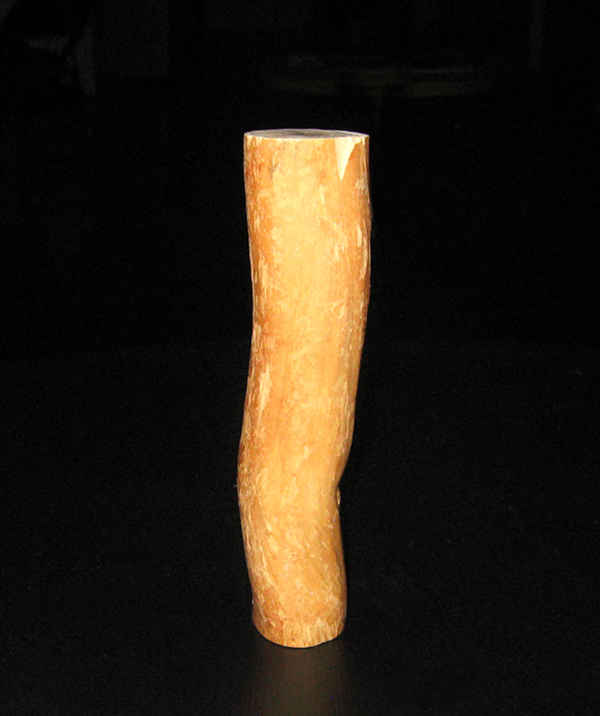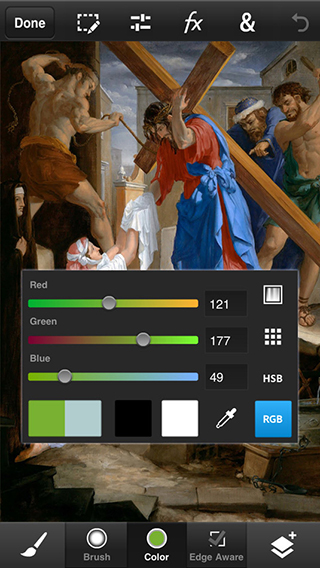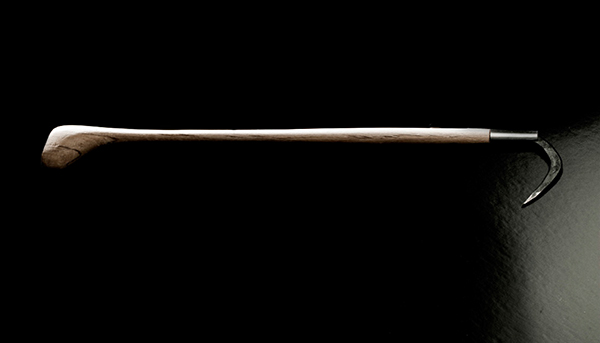Usus Pauper
Keywords: Art, cult of money, economy, Franciscan order, global capitalism, Howie Chen, Instituto de Liderazgo en Artistas, Jason Kakoyiannis, JEQU, Libby Rothfeld, MUCA Roma, Nadav Benjamin, New Humans, Saint Francis, Saint Francis of Assisi, Sistine Chapel, Usus Pauper, Vicente Razo, Vow of Poverty
The Franciscan vow of poverty in the cult of art
Poverty has always held a special value in the cult of money.
We are all somewhat familiar with the life of Saint Francis of Assisi. He was the son of a wealthy Italian cloth merchant who, after a spiritual encounter with a beggar at the market, renounced worldly ways. In 1209, Saint Francis founded a Roman Catholic order dedicated to a life of poverty, chastity, and religious devotion. Central to the Rule of Saint Francis is the vow followers must take: the renunciation of property ownership and a judicious commitment to the limited “poor use” or the usus pauper of material goods.
Property ownership and unreflective use of things were considered in violation of the Franciscan vow – a mortal sin that deadened the soul. Saint Francis’s proposal was controversial. This tradition of apostolic poverty had roots in anarchic opposition to the Church and Saint Francis’s sacred beliefs seemingly contradicted an unspoken asset of the Catholic Church at that time: material wealth.
However, within a few centuries the Franciscan order grew from lone mendicant wanderers to a colonial organization with complex levels of administration and divisions of labor. Having received increased donations from its patronage and gaining institutional positions (including professors, judges, and royal and church officials), the Franciscans soon faced its own paradoxical dilemma from within that threatened the purity of their apostolic vow. They had their own problem of material accumulation and issues of appropriate usage of goods.
The Franciscan order had to reevaluate their relationship with property. If man exists in the material world, is he able to use worldly things solely in a restricted “poor” way for religious reasons or necessities of life? If so, how would he judge each situation? Does any material usage violate the vow of poverty by default? These questions plagued the Franciscans.
Like all institutions, the Franciscan Order and the Catholic Church responded by administrating their problem through a series of juridical constructions.1 They created a workaround by externalizing property ownership to the Holy See and vesting all things they received (i.e., food, wine, clothes, real estate) to the Pope, who in turn allowed Franciscans sin-free poor use (usus pauper) of the procurated property.2 This technical structure relieved the Franciscans of the moral burden of ownership, allowing them to maintain the narrative of apostolic poverty while avoiding real conditions of material poverty. For a period, the Franciscans played a double game as they sought a spiritual life – being technically “poor” while having access to the material world.3
In many ways, the radical communism often attributed to Saint Francis4 is travestied by the Order’s eventual reliance on institutional discipline: apostolic poverty became a fiction that needed to be reproduced through an apparatus.
Artists today find themselves in a similar paradox, unable to reconcile the narrative of meaningful scarcity from which they are expected to produce with the material abundance of the market in which they participate. There is a sense that a similar fiction is being sustained that constructs the prototypical figure of the artist as external to the corrupting agents of money and commerce. The reality is otherwise.
With the heightened imbrication of art and the market and the conspicuous ascendance of wealthy artists, the contradiction has become increasingly untenable. What are the surpluses and shortfalls of this type of system for artists at large?
Despite a surfeit of capital and semiotic goods in the larger economy, artists face an increasing impoverishment of their material condition coupled with a paucity of description for this reality. In addition, critical art practices rooted in the project of autonomy and refusal (against market, authority, industrial discipline, and commodification) are having trouble defining its object of critique and its justifications.
In transvaluing Franciscan poverty and usus pauper in a secular register, we can perhaps assess the current impoverishment of the art producer and this double game between the artist and the market at hand.
Pauper
The narrative of the artist has traditionally been one of scarcity (e.g. starving artist), a notional condition for gaining some kind of true access to exceptional meaning and insight. There is an implicit vow-of-poverty embedded in the myth of art, one which externalizes the market and its imperatives to maintain the space of meaningful art production. This relationship – the market as the Other of art – is largely the perceived source of untainted artistic value and differentiates art from other creative fields driven by commerce.
Like the fiction of apostolic poverty, this narrative of the artist is continually reproduced through the apparatus of contemporary art and bears art’s paradoxical facility for constituting the market despite its underlying disavowal.
The art market continues its hegemony by integrating the demands of artistic critique and leveraging the narrative of the artist. Because art seeks to be an exceptional space external to the market, the special value produced within as art is ripe for expropriation. This oppositional binary of art and market creates the conditions for artist’s material and critical pauperization. This comes at no surprise as impoverishment is a condition of capitalism – it provides producers the bare minimum for sustenance to continue the maintenance of the overall system.
Material Life5
For the vast majority, the economic portrait of the contemporary visual artist is one governed by economic and attention scarcity. In some cases the economic penalty for artists choosing the visual art field is only second highest to those entering the clergy.6 The perceived special status of art often justifies the voluntary paucity and risk assumed by the artist.
Studies regarding this subject tend to focus on artists who produce in the gallery system or those who aspire to gain access to the art market through galleries and dealers. The profile of today’s artist is rendered as a set of necessary competencies: global, urban, educated, professional, flexible, projective, etc.7 The desired geographical backdrops for artists are city centers, where concentration of capital and cultural resources comprise the network of the art world – New York, London, Berlin, Brussels, Paris, Beijing, to name a few. These locations manifest physical pathways of the artist, characterized by migratory urbanism and global mobility, taking the artist precariat and setting her in motion.
All this, however, comes at a cost to the artist. In the United States, the precipitous increase in applications to Master of Fine Arts programs over the last decade (despite rising tuitions and the state of the real economy) reflect the seemingly overriding professional imperative of the artist: formalizing an art career through education and market institutions.
As a result, artists who pursue graduate degrees often carry heavy student debt after graduation. And, because it is difficult to rely on income solely from selling artwork, artists join the burgeoning freelance labor precariat who face an accepted existence of multiple-jobs, high unemployment, and an absence of health insurance and other benefits. As if artists must exhaust their resources to be truly devoted.
Unlike other professions, the actual marketplace therapist los angeles “skill” of the artist is difficult to define beyond qualitative creative abilities – i.e., “thinking outside the box” and “independent minded”. Artists with graduate degrees may pursue highly competitive teaching positions at colleges or universities where, as artist educators, they feed the very art-education complex through which they were formed. For other jobs in the art field, compensation is typically lower to reflect the cultural benefit of working near art and participating in its exceptional gift economy.
Beyond accepting an economic disadvantage, artists have to produce a materialism that they are unable or willing to attain.
Market Other
Art history and criticism tend to narrate the relationship between art-making and the exchange economy for art as one of consistent antagonism. These narratives emphasize the market’s ability to alienate art from productive forces of life. It is where qualities are quantized, concepts are reified as inert objects, and inequality is created because of the impossibility of true equivalent exchange. In this narrative, art making has the implicit charge to resist the market and inherits the burden of critique.
Therefore, different types of artistic strategies have necessarily formed to negotiate this relationship. This includes total refusal (historical avant-garde), persistent tension without escape (modernism), art-making as labor relation (institutional critique), self-reflexive play of consumer values (early postmodern), or critical emulation of other luxury goods in an increasingly undifferentiated flow of capital (globalization arguments). 8
The contemporary artist figure is seen as the producer of subjectivities, knowledge, affects, social relations, and life energies from a space other than the market and its imperatives. Manifested as contemporary artistic critique, the narrative is one of resistance toward the full imbrication of art making and the consumer market. This refusal of the market constructs art’s implicit vow of poverty and underwrites its special symbolic value.
In High Price, Isabelle Graw makes a case for the presence of a heteronomous relationship of art and the market from mid-19th century to now (i.e., from Gustav Courbet to Jeff Koons). According to Graw, the trouble in maintaining an effective critical position today stems from the art producer’s simultaneous acceptance of the belief system of art and the normative power of the market. An untenable contradiction arises for the artist playing this double-game – “those who banish the market to an imaginary outside while at the same time feeding it.”9 A conflict in art’s narrative binary occurs.
This intensifies as commercially successful artists accumulate wealth in “winner-takes-all” scenarios while the majority of others struggle in aspiration under the same narrative of art.

JEQU (2013)
Interpenetrate
In returning to the artist’s version of Franciscan usus pauper, a set of incongruences arise: Can art producers continue to externalize the market while claiming a right to access it when necessary? Given this relationship and art’s refusal, are we to be surprised by the impoverished material conditions of the artist? How does the art market take advantage of this “double- game” configuration and the special value produced from it? Is the preservation of this artist narrative at stake?
That being said, the space of art production is complex and cannot only be defined by the externalization of the market. Rather, it is a heteronymous construction of art and the market. Through this conception, critical agency now lies in how artists decide to engage this relationship in each situation and the strategies they use to negotiate this interpenetrated, contingent space of art production.
Franciscan reformist Peter Olivi proposed a similar model of circumstantial indeterminacy in the 14th century. In an attempt to deal with the untenable contradiction in the vow of poverty, Olivi collapsed the constructions of an external space to reveal what was at hand. He proposed that everyone judges his material use in each situation, allowing for autonomous ethical judgment and acknowledgement of the paradox. In applying Olivi’s methods, hardened critical binaries could give way to a multitudinous field of oppositional contradictions. The practice of contemporary art making becomes our secular usus pauper – our urgent impoverishment as a medium for critical production.
Smoke
As white smoke wafted from the chimney of the Sistine Chapel earlier this March of 2013, the Roman Catholic conclave of cardinals signaled its election of a new Pope. They had chosen an Argentine cardinal whose profile seemed well suited to step into a leading role at the crisis-ridden Church. The elected Pope chose Francis as his papal name as an homage to first Jesuit missionary St. Francis Xavier and, more importantly, St. Francis of Assisi.
In his first address, Pope Francis explained that austerity is the path to revamping the Church, invoking a poverty that binds people. Most recently he decried global capitalism’s cult of money as having created a “dictatorship of an economy, which is faceless and lacking any truly humane goal.”
This statement only matched by his position defined by a cult of poverty as leader of the world’s wealthiest organization.
Adapted from a presentation at MUCA Roma – UNAM for “La Pauperización del Productor” organized by the Instituto de Liderazgo en Artistas in Mexico City, October 2012.
1. “…they continued to want to have it both ways: on the one hand, they had abdicated all rights and powers over things, whether rights of ownership or of use; and on the other, the Order accumulated properties, building, libraries and engaged, for all intents an purposes, in a variety of transactions.” Peter Garnsey, Thinking about Property: From Antiquity to the Age of Revolution (Cambridge University Press, 2008) p. 100-2. ↩
2. Pope Nicholas III 1279 bull Exiit qui seminat.↩
3. In 1322, recognizing an untenable contradiction, Pope John XXII returned the ownership of the Franciscan Order’s possessions with the bull Ad conditorem canonum.↩
4. See Giorgio Agamben, The Time That Remains: A Commentary on the Letter to the Romans, (Stanford University Press, 2005) 23-7 and Antoni Negri and Michael Hardt, Empire, (Harvard University Press, 2000) 413.↩
5. Jason Kakoyiannis, “Resale Royalty Rights and The Context and Practice of Art Bargains”, http://www.jequ.org/index.php?/links (2006).↩
6. Hans Abbing, Why Are Artists Poor?: The Exceptional Economy of the Arts , (Amsterdam University Press, 2004) 40.↩
7. Gender, race and class remain crucial factors in the construction of today’s international artist.↩
8. Adapted from JEQU introduction by Jason Kakoyiannis for Olav Velthuis at The Independent, New York, http://www.jequ.org/index.php?/projects/1-olav-velthuis–35 (2010).↩
9. Isabelle Graw, High Price: Art Between the Market and Celebrity Culture (Sternberg Press, 2010) 9-17.↩
Howie Chen is a New York–based curator who is a co-founder of Dispatch, a curatorial production office. He is a member of New Humans and JEQU.
Images Vicente Razo and JEQU
Concept/Direction Howie Chen and Jason Kakoyiannis (JEQU)
Photography Nadav Benjamin and JEQU
Special thanks Jason Kakoyiannis and Libby Rothfeld.



